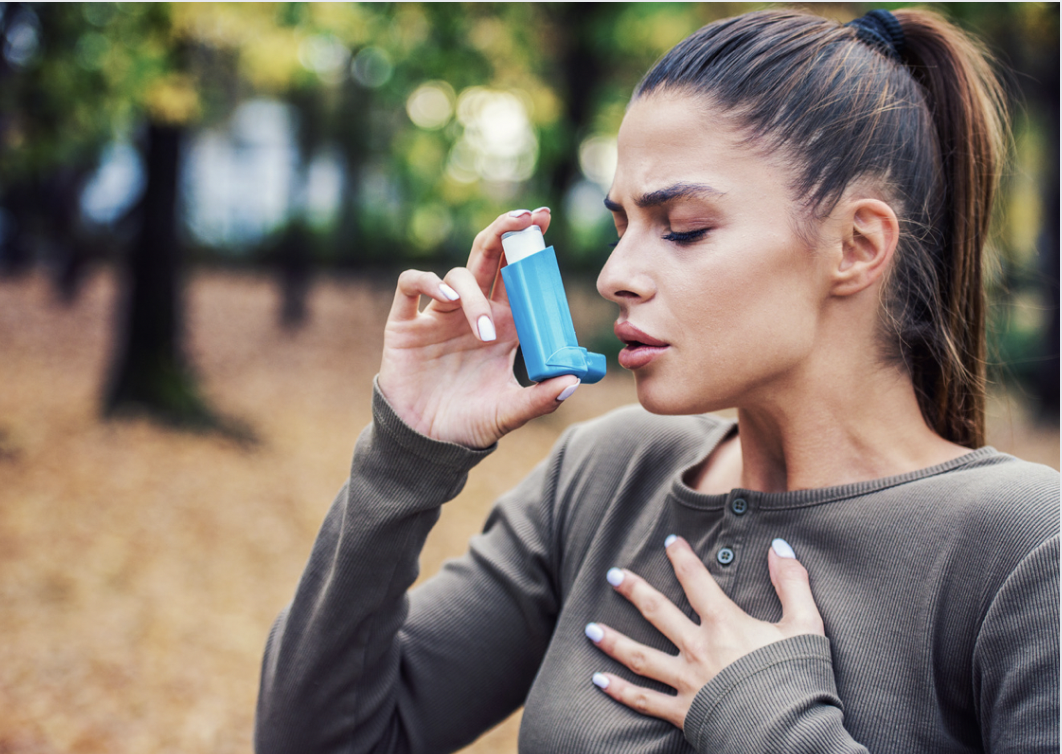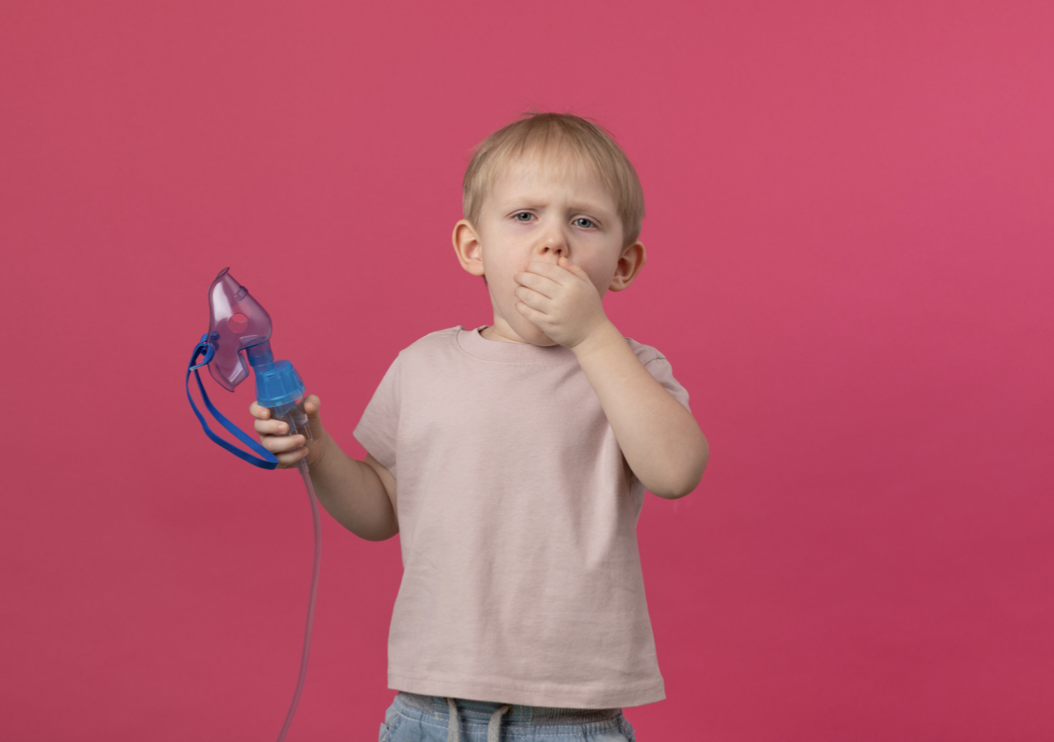Definition
Viral-induced wheezing is wheezing caused by a viral infection and often begins with symptoms like cough or cold. Wheezing itself is a high-pitched whistling sound heard during exhalation. It occurs when the airways become irritated and inflamed due to a viral infection, causing them to swell and narrow. Viral-induced wheezing is quite common in children, affecting nearly one-third of all children, especially those under 3 years old. This condition is more likely to affect children who have experienced bronchiolitis, been exposed to cigarette smoke, were born prematurely, or are preterm.
If your child experiences viral-induced wheezing, it doesn't necessarily mean they have asthma. Viral-induced wheezing causes symptoms similar to asthma but is a different condition. Children with asthma may experience wheezing even when they're not coughing or have a cold, while with viral-induced wheezing, children won't wheeze if they're not experiencing a cold or viral infection. Wheezing in asthma often occurs with exercise or exposure to trigger allergens (like dust, hot or cold weather) and usually has a family history of asthma, eczema, or allergies. More than half of children with viral-induced wheezing will recover and improve by preschool age or when their airways have grown and developed. However, in some cases, children with viral-induced wheezing may progress to asthma.
Causes
Viral-induced wheezing is caused by a viral infection. Some viruses commonly causing it include Respiratory Syncytial Virus (RSV), Human Rhinovirus (RV), Enterovirus, Bocavirus, Coronavirus, Parainfluenza virus, Influenza virus, Human MetaPneumovirus (hMPV), and Adenovirus. These viral infections can lead to the narrowing of the small airways and increased mucus production in your child's lungs. As a result, the narrowed airways produce a high-pitched whistling sound called wheezing when air passes through them. Viral-induced wheezing occurs more often in children under 3 years old because their airways are smaller and more susceptible to such infections. Wheezing can recur each time your child has a cold and sometimes can last for several weeks.
Risk factor
Some factors that can increase the risk of a child experiencing viral-induced wheezing include:
- Being under 3 years old
- Exposure to cigarette smoke, as children around smokers are more likely to get viral-induced wheezing
- Premature birth or a history of bronchiolitis, as viral-induced wheezing is more common in these cases
Symptoms
Viral-induced wheezing often starts as a cold, accompanied by a runny or stuffy nose. Your child may also have:
- Fever
- Cough
- Rapid breathing rate
- Additional breathing sounds (wheezing) when inhaling, exhaling, or both
- Difficulty breathing or discomfort in the chest
Diagnosis
In diagnosing viral-induced wheezing, the doctor will start by conducting an interview, usually with the child's parents or caregivers, to ask about the pattern and severity of symptoms, any history of wheezing without a cold or viral infection, allergic disease history in the child or family, triggering factors for wheezing (such as cigarette smoke, dust, pollen, etc.), and history of previous medication use.
The doctor will then perform a physical examination, mainly to ensure that the breath sounds heard are indeed wheezing (a high-pitched sound typically heard during exhalation). The doctor will also assess the severity of the attack, including the level of activity the child can still do, how the child speaks (whether they can speak full sentences or only words), lip and skin color, breathing rate, chest wall movements during breathing, the degree of wheezing, and oxygen saturation.
In most cases, no specific diagnostic tests are required to diagnose viral-induced wheezing. Chest X-rays are only necessary if asymmetric chest wall movements and unequal breath sounds are found in both lungs or if the child does not respond to the given treatment.
Management
Most children with viral-induced wheezing can recover without any treatment. Antibiotics are ineffective in viral-induced wheezing because it's caused by a viral infection, not bacteria. Wheezing symptoms will improve with the use of inhaled bronchodilator medications. Bronchodilators, such as Salbutamol, are medications that help open the airways, allowing air to enter and exit the lungs more easily. Your child may also be given short-term oral steroid medications, such as Prednisolone, to help reduce inflammation in the airways.
Most cases of viral-induced wheezing can be managed as an outpatient without the need for hospitalization. Some things you can do when caring for your child at home include:
- Give your child plenty of rest and avoid stressful situations
- If your child has a fever, apply warm compresses and give fever-reducing medication, such as Paracetamol
- Give your child inhaler medication as directed by the doctor to reduce wheezing symptoms
- Provide plenty of fluids and offer food if your child is willing, preferably in small but frequent portions
- Rest your child from school or daycare activities until they feel better
- Do not smoke inside the house or car or anywhere near your child
Sometimes, in certain cases, children with viral-induced wheezing may need short-term hospitalization if they have the following conditions:
- Difficulty breathing or shortness of breath
- Require more frequent use of inhaled bronchodilators (more than every three hours)
- Require extra oxygen. Oxygen may be needed to support your child's breathing, and they will remain in the hospital until oxygen levels return to a safe level.
- Unable to eat. Your child should be given small, frequent meals and drinks.
Complications
Some complications that may arise from viral-induced wheezing include:
- Asthma: Children with recurrent viral-induced wheezing may develop asthma later in life.
- Pneumonia: Infections can spread to the lungs, leading to pneumonia.
- Pneumothorax: This is a condition where air leaks into the space between the lungs and chest wall, causing lung collapse.
- Respiratory failure: Severe cases of viral-induced wheezing can lead to respiratory failure, where the lungs fail to provide enough oxygen to the body.
Prevention
The best way to prevent viral-induced wheezing is to prevent viral infections that can cause wheezing in children. Additionally, there are several ways to prevent wheezing, such as:
- Create a smoke-free environment: Ensure your child's environment is smoke-free. No one must smoke near your child. Cigarette smoke, even on clothing, can trigger wheezing in children.
- Keep the house warm: Keeping the house warm and having good air circulation will also reduce the risk of your child getting viral-induced wheezing.
When to see a doctor?
Seek medical attention for your child immediately if they experience wheezing accompanied by:
- Rapid breathing rate
- Very fast heart rate
- Visible retractions of the chest wall when breathing
- Restlessness
- Shortness of breath, preventing them from speaking in complete sentences
- Your child appears lethargic
- dr Anita Larasati Priyono
Coleman, Amaziah, et al. Viral-Induced Wheeze and Asthma Development. (2016). Retrieved 27 February 2022, from https://www.ncbi.nlm.nih.gov/pmc/articles/PMC7173475/
Douros, Konstantinos, et al. Time to Say Goodbye to Bronchiolitis, Viral Wheeze, Reactive Airways Disease, Wheeze Bronchiolitis and All That. (2020). Retrieved 27 February 2022, from https://doi.org/10.3389/fped.2020.00218
Gilchrist, Judith. Viral Induced Wheeze. (2020). Retrieved 27 February 2022. From https://www.sheffieldchildrens.nhs.uk/download/628/medicine/9967/1702_viral_induced_wheeze.pdf
Redding, Gregory. Role of Viruses in Wheezing and Asthma: An Overview. (2021). Retrieved 27 February 2022, from https://www.uptodate.com/contents/role-of-viruses-in-wheezing-and-asthma-an-overview?topicRef=546&source=see_link
Viral Wheeze. (2020). Retrieved 27 February 2022, from https://www.kidshealth.org.nz/viral-wheeze




/inhaler.jpg)





